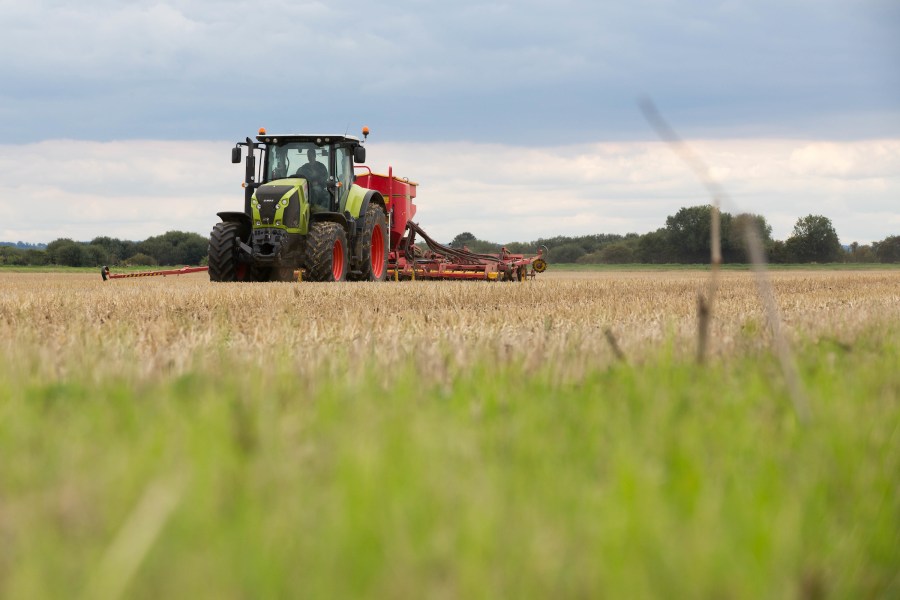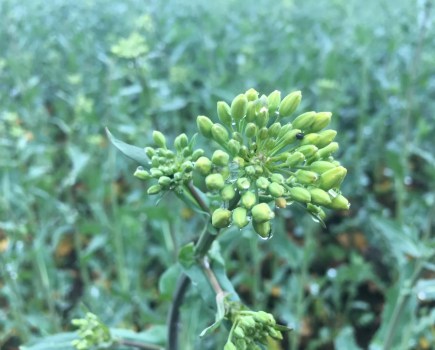Over-cultivating seedbeds, or cultivating them too soon after harvest, risks damaging soil structure and impairing following crop establishment, warns Hutchinsons.
Speaking at a recent open day at the firm’s Helix West demonstration farm in Oxfordshire, Dick Neale, technical manager at Hutchinsons, urged growers to be patient before going onto land with the cultivator after harvest.
He says that there’s a particular risk where shallow or minimal cultivations were carried out too early, leaving soils exposed to weathering for several weeks before drilling, and potentially leading to seedbeds slumping, capping and less able to infiltrate water.
“Poor water infiltration is a fundamental problem on many UK farms. It’s often exacerbated where seedbeds are over-cultivated or where shallow tillage is done too early in the season, leaving the same weathering time as would be allowed for deep-tilled seedbeds. All too often soils then breakdown too much and growers find seedbeds have slumped by the time they get to drilling in September or October.”
Tailor timings
Dick advises growers to tailor cultivation timing more closely to the type of machine used, soil type and time required for weathering or further cultivations before drilling. But he also acknowledged that workloads and time constraints at such a busy time of year, together with uncertainty about the weather as autumn approached, often made it difficult to make such a decision.
Therefore, where ground has to be cultivated earlier, he recommends establishing a fast-growing multi-species catch or cover crop to stabilise aggregates, build natural structure, retain nutrients and add organic matter. “One of the best ways to stop soils slumping is to keep growing roots in the ground at all times and let soil biology do the work for you.”
According to Dick, a constant supply of organic material, such as from crop residues or catch/ cover crops, is essential for “feeding” the active soil biology that drives aggregation of soil particles, as exudates produced from bacteria and fungi breaking down organic matter helped bind aggregates together. “The only way to get energy from the sun into the soil food web is with a green, growing plant to feed the biology.
Improving the natural structure and aggregation of soil also has many benefits for crop productivity, not least in leading to better water infiltration and allowing soils to store water more effectively, he adds. This would support growth during dry periods, boost the activity of worms and other soil biology, and improve nutrient flow and crop uptake.
Cover crop benefits
Despite suggestions that there is not enough time to establish a catch crop between harvest and drilling, Dick noted two Hutchinsons mixes (MaxiCover and MaxiCatchCrop) as being particularly quick to get going and put down roots.
MaxiCover contains eight species of legumes, forbs and brassicas, offering a diversity of rooting depths and a varied food source for soil microbes. MaxiCatchCrop contains three fast-growing species of buckwheat, mustard and berseem clover, designed to get living roots into the soil in the narrow gap between cash crops.
Dick advises growers look to sow a cover or catch crop to choose a multi-species mix containing a range of different rooting types and depths. He says any cover or catch crop should be tailored to deliver the functions required from it in individual situations and soil types, such as soil conditioning, alleviation of compacted layers, nutrient capture, nitrogen fixation and/or building organic matter.
To find out more about Hutchinsons’s cover and catch crop options, go to www.hlhltd.co.uk/products/seed




